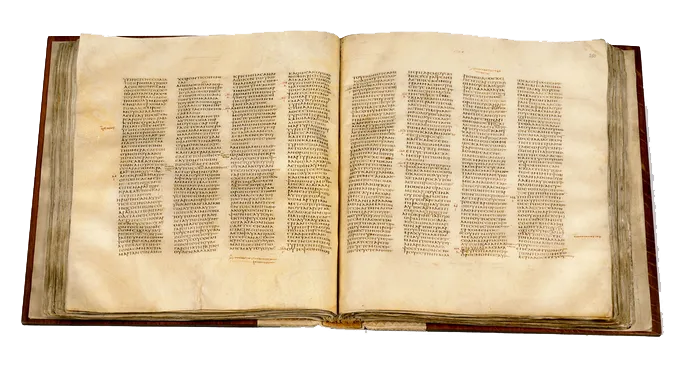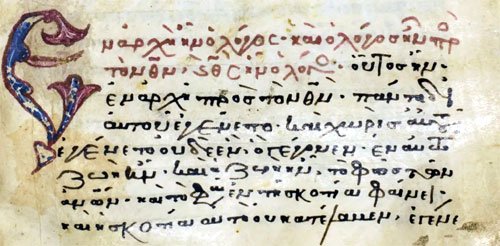Return to: Ancient Biblical Manuscripts

Simply defined a manuscript is a work written by hand instead of printed. Before Johannes Gutenberg introduced movable type to the world in the fifteenth century most books required a pen for production. When we consider manuscripts, we naturally include almost every written work before 1450.
As their work was circulated, scribes copied the wording from these documents in order to share the letters, historical accounts, and prophecies. The authors’ original manuscripts no longer exist, most likely having disintegrated with time and use. Thousands of handwritten copies, however, contain the text transmitted by the original authors, some reaching back as early as the second century AD. These Greek New Testament manuscripts today serve as the primary source of accounts of Jesus and the apostles.
Scholars debate exactly when each book of the New Testament was written, but we know that they were produced centuries before the advent of movable type. Yet, while the authorial works have worn away with use and age, hundreds of copies produced by scribes over time passed the words on to each successive generation in the vessel of ancient books.
Materials
The earliest copies of the New Testament were written on papyrus, a paper-like material made from papyrus plants. Papyrus “sheets” were most often made into rolls but were also cut into pages for codices.
Later, parchment grew into prominence in bookmaking, and, thus, more New Testament manuscripts were made of parchment. This book material, made of animal skin, makes up most extant Greek New Testament manuscripts.
Even later, paper became more widely used in New Testament manuscripts. Scholars are able to estimate the date of a manuscript by its material and the knowledge of ancient culture.

Codex

Almost all of the extant Greek New Testament manuscripts take the form of the codex. Much like the books that we know, a codex is essentially a stack of sheets sewn together often between a top and bottom cover. Larger sheets were folded together into a gathering called a quire. A codex could be made of one large quire or many smaller ones. The compact design of the codex allowed for more text to be included than a roll, and for the combination of multiple works. Many New Testament manuscripts contained multiple New Testament books or other writings within the one codex.
The words within each Greek New Testament codex result from the work of scribes, as with most book reproduction before the printing press. Men and women, bent over a copy of the text and fresh papyrus, parchment, or paper, reproduced the words over centuries. Some scribes left notes that reveal more about their situation. Studying the copies, scholars find one thing remains true of all scribes: they are humans. Some are more careful, others not as careful.
Handwriting
Before an English New Testament can be produced, translators consult a critical edition of the Greek New Testament. This “critical” edition develops from the compilation and comparison of thousands of handwritten Greek manuscripts. These manuscripts range from approximately 500 years old to 1700 years old and are produced in two, distinctly different styles of handwriting. Before an English New Testament arrives at your home, the Greek New Testament is translated, but before the Greek New Testament can be created, someone must read the manuscripts, but before someone reads the manuscripts, they must be trained to read the handwriting. Therefore, behind the pages of an English Bible, lies the entire history of Greek handwriting.
Majuscule Handwriting
Scribes used a majuscule handwriting from the 4th century B.C. until about the 9th century A.D., though we find the usage of this script continuing beyond the 9th century in some liturgical texts. The style of majuscule changed throughout the period of its use but remained in this form, which is somewhat equivalent to capital letters.

Minuscule Handwriting
A more compact and efficient form of writing, the minuscule script developed after majuscule handwriting. Over the course of its use, minuscule handwriting morphed into different styles, including many ligatures and shorthand forms.

Some of the information on this page provided by:

James White is the director of Alpha and Omega Ministries, a Christian apologetics organization based in Phoenix, Arizona. He is the author of more than twenty books and is an accomplished debater. He is a professor with Grace Bible Theological Seminary, and a pastor at Apologia Church
Return to: Ancient Biblical Manuscripts
